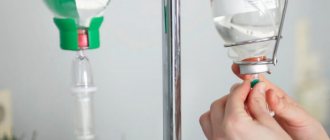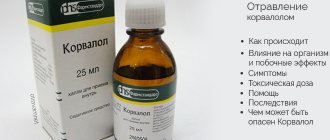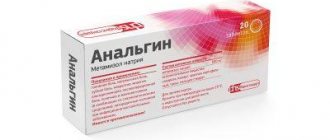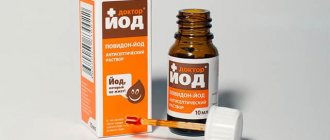There are a large number of potentially hazardous substances in the human environment. For example, cauterizing poisons are caustic alkalis, acids and oxidizing agents . Such substances can cause a chemical burn to the skin and mucous membranes, and also have a resorptive effect (the effect develops after absorption and entry into the general bloodstream).
Poisoning of this kind can be obtained not only during laboratory work with chemical reagents, but also during routine household cleaning using aggressive substances.
The most common cauterizing poisons
The most commonly used and widespread toxic cauterizing substances are:
- various acids (nitric and phosphoric, sulfuric and hydrochloric, chromic, boric and oxalic;
- vinegar essence;
- potassium hydroxide (including potash and caustic potassium);
- sodium hydroxide, or sodium hydroxide;
- ammonium hydroxide in the form of a solution of ammonia and ammonia;
- bichromates;
- chromium trioxide;
- chromates;
- sodium bisulfate;
- ammonium or potassium carbonate;
- silver nitrate;
- bleach;
- potassium permanganate;
- hydrogen peroxide, or perhydrol;
- some bromine solutions and compounds;
- some solutions and iodine compounds;
- some fluorine solutions and compounds;
- household cleaning products and detergents;
- solutions found in car batteries.
The use of such substances causes damage to the skin and mucous membranes and has an extremely negative effect on the condition of internal systems and organs.
First aid rules
First aid for poisoning is calling an ambulance. Without correct diagnosis and adequate medical care, irreversible damage to the body, even death, can occur.
If the victim is conscious, find out exactly what, how and when he took it. The information must be reported to the doctor. Save leftover food, packaging - anything that could cause intoxication.
Before the specialist arrives, it is necessary to keep the victim conscious and reduce the toxic effect - the general algorithm.
Provide fresh air, leave the gas-filled room. Loosen your clothes to make breathing easier.
Rinse your nasal and oral cavities. Give absorbent drugs. If the victim is conscious, induce vomiting. If he is unconscious, turn him on his side, hold his head so that the person does not choke when he spontaneously vomits, or suffocates when his tongue retracts. Do a gastric lavage - cleanse the intestines with a laxative.
The set of causes and mechanisms for the development of intoxication
The etiopathogenesis of poisoning with various substances related to cauterizing poisons is characterized by the following manifestations:
- cauterizing local effect in the form of liquefaction necrosis (alkali);
- coagulation necrosis, hemolytic and nephrotoxic effects in the form of hemoglobinuric nephrosis (acid);
- convulsions, coma, damage to the central nervous system due to resorptive effects;
- toxic burn shock and burn disease with chemical burns of the oral cavity, stomach and esophagus, sometimes intestines;
- methemoglobin-forming properties under the influence of potassium permanganate;
- hepatotoxic effects of chromic acid and its compounds;
- gas embolism of the vessels of the brain and heart under the influence of a technical 40% hydrogen peroxide solution.
Pathomorphological changes as a result of intoxication cause complications, therefore diagnostic measures and qualified medical care must be provided in full.
Possible complications
The prognosis for poisoning is serious. Cauterizing substances cause complications:
- under the influence of nitric, sulfuric and hydrochloric acid, perforation of the stomach occurs with the development of peritonitis;
- severe pain caused by cauterizing substances leads to the development of severe burn shock;
- gastric bleeding may occur early or late;
- intestinal paresis is complicated by peritonitis;
- acute renal failure with complete cessation of urine output;
- purulent bronchitis, tracheitis, pneumonia.
If the victim manages to survive, a cicatricial narrowing of the esophagus and stomach subsequently forms, which makes eating difficult.
In addition, a person has been treated for many years for exacerbation of chronic bronchitis, kidney failure, and damaged liver.
Symptoms of poisoning
With the damaging toxic effects of acids and alkalis, the victim experiences symptoms such as:
- visual impairments;
- nosebleeds;
- hoarseness of voice;
- pain in the nasopharynx;
- swelling of the respiratory tract;
- the appearance of a specific odor from the mouth;
- changes in the color of the tongue and mucous membranes of the mouth;
- repeated painful vomiting;
- the appearance of blood and mucus impurities in the vomit;
- stomach bleeding;
- excessive salivation;
- pink, brown or dark brown urine;
- drop in blood pressure;
- heart rhythm disturbances;
- increased body temperature;
- suffocation due to swelling of the larynx.
In case of alkali poisoning, the victim may experience sharp pain in the digestive tract, profuse and debilitating vomiting with odorless but dark-colored vomit, thirst and the inability to completely empty the bladder.
In severe cases, loss of consciousness and cardiovascular failure, as well as perforated peritonitis, may develop.
Mushrooms
How dangerous. Poisonous and conditionally edible mushrooms contain chemical compounds (toxins) that have a negative effect on various organs and systems. The most common targets of toxins are enterocytes (intestinal cells), hepatocytes (liver cells) and nephrocytes (kidneys). The sad palm among dangerous mushrooms is held year after year by the pale toadstool, which would-be mushroom pickers mistake for russula, champignons, and umbrella mushrooms.
Question answer
Mushroom poisoning: symptoms and first aid. Infographics
The clinical picture of acute poisoning by toadstool - the so-called phalloidin syndrome, in which cramping pain in the abdomen, nausea, uncontrollable vomiting, frequent (up to 20-25 times) loose stools with blood in the stool - begins to develop 6-40 hours after consumption poisonous mushroom. In order to get severe poisoning, a person who, for example, weighs 70 kg, only needs to eat 70 g of a dangerous product. Another characteristic sign of such poisoning is, as a rule, the absence of elevated body temperature.
What to do before the ambulance arrives. The same as for food poisoning.
Diagnostic features
Under conditions of mild hemolysis, free plasma Hb does not exceed 5 g/l. In case of moderate poisoning, the level can reach 10 g/l, and in case of severe damage, these parameters exceed 10 g/l.
Hemoglobinuria is observed in the victim's urine, accompanied by a concentration of free plasma Hb at a level of 1 g/l or more. Differential diagnosis, as a rule, does not cause any particular difficulties. Poisoning can be diagnosed based on the collected medical history and the presence of a characteristic clinical picture:
- hydrochloric acid causes the formation of grayish-white spots on the mucous membrane of the mouth, pharynx and lips;
- nitric acid provokes the formation of yellow and greenish-yellow scabs;
- vinegar essence causes superficial white-gray burns;
- carbolic acid provokes the formation of bright white spots, reminiscent of ordinary limescale;
- chromic acid causes brownish-red stains.
When poisoned with silver nitrate, white or gray spots form on the oral mucosa, and the vomit is whitish in color, but turns black in the light. Intoxication with potassium permanganate causes methemoglobnemia and the appearance of a dark brown stain on the mucous membranes of the mouth. Boric acid poisoning often causes a bright red skin rash.
Video: do not watch how the stomach is washed
Read further:
Caring for a disabled pensioner: is there a way out?
How to properly detoxify the body?
Who needs a break from binge drinking?
Blepharoplasty: indications and features of the procedure
Laparoscopic gastrectomy: indications, implementation features
Article rating:
Share with friends:
You may also be interested in:
Bifidumbacterin











